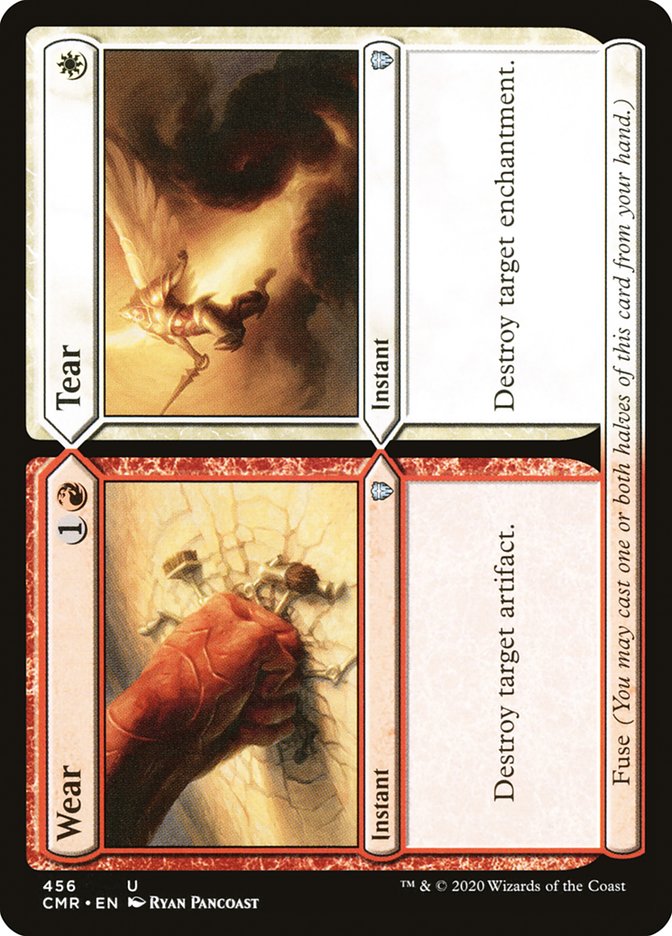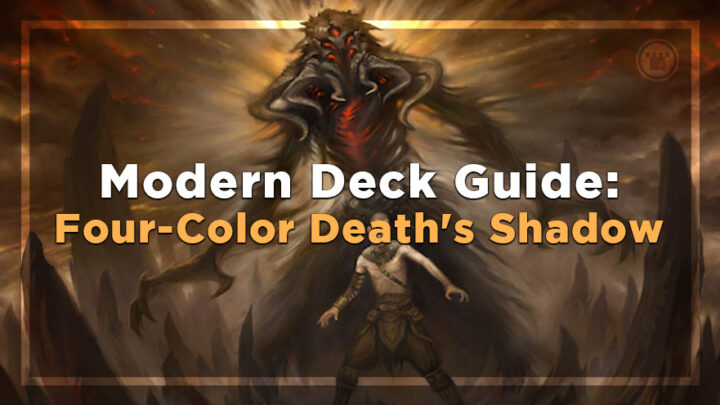Grixis Death’s Shadow has been putting up great results in Modern since November. In fact, it made the cut as one of just three A-Tier decks in our monthly Modern Tier List last week. But ironically, over the last two months, I’ve been gravitating to Four-Color Death’s Shadow instead.
Why stray from such a successful formula? Simply put, to see if I can make it better. I believe I have succeeded in that endeavor, and the answer is adding white cards.
But Why, Though?
Fair decks are all the rage in Modern right now. GDS, Izzet Murktide, Four-Color Yorion, and Jund Saga are all well-positioned and popular. A higher density of both Lurrus of the Dream-Den and Urza’s Saga has pushed me away from having too many discard spells in the main deck. When opponents are generating value from their graveyards or with their lands, drawing a discard spell is often a liability. And with an uptick in the popularity of fair decks, the combo decks I’d normally target with discard spells fell across the board. I still have four copies of Thoughtseize instead of Inquisition of Kozilek because it enables Death’s Shadow, and Thoughtseize is also a clean answer to Murktide Regent and Omnath.
Prismatic Ending
Friendship ended with Inquisition of Kozilek. Now Prismatic Ending is my best friend!
Prismatic Ending is one of the most important cards in Modern, and I believe any deck that can support it should try to run it. Death’s Shadow is an efficient tempo strategy, and it lends itself perfectly to playing an efficient catch-all answer.
Historically, Grixis Death’s Shadow has struggled with noncreature permanents once they’re on the battlefield. When faced with a Rest in Peace, a Chalice of the Void, or a Sigarda’s Aid, GDS can either take them with a discard spell or counter them. Instead of developing your game plan, you had to hold up mana for a counter and hope that your opponent cast one of these spells. Chances are, a savvy opponent would choose to wait, as most decks play a better long game than GDS.
That play pattern changes when you have Prismatic Ending in your deck. Suddenly, you’re free to cast your spells, then use Prismatic Ending to answer any problem your opponent presents.
Prismatic Ending also serves as a one-mana removal spell to answer early threats in Lurrus mirrors. I’d much rather have a Prismatic Ending than an Inquisition of Kozilek when staring down a Ragavan on the draw.
Lightning Bolt is versatile, but ultimately just doesn’t quite do enough right now to make the cut. Current threats in Modern need to be answered quickly, or they’ll run away with the game. Unfortunately, Lightning Bolt misses too often for my liking.
I have one Fatal Push over the fourth Prismatic Ending mostly out of respect for Hammer Time. Instant-speed removal is especially important in that match-up so you can try to blow out their Colossus Hammer turns, and Fatal Push is the best card to do that. Plus, Prismatic Ending and Fatal Push team up to give Four-Color Shadow four ways to answer an opposing Death’s Shadow regardless of how big it is.
Kaya’s Guile
Kaya’s Guile is an incredibly powerful card in today’s metagame, but is held back by having black and white in its cost. It’s been some time since we’ve seen a great deck with the ability to cast Kaya’s Guile, which is why we don’t see it too often. Truth be told, Kaya’s Guile is one of my favorite cards to splash because it covers so many sideboard requirements. I can’t think of another card that I would board in against Burn, Izzet Murktide, Living End, Dredge, Death’s Shadow, and Eldrazi Tron.
Making each opponent sacrifice a creature and exiling their graveyards are my default modes against BRx Lurrus and Izzet Murktide. Having access to Kaya’s Guile in those match-ups alleviates the need for more Soul-Guide Lanterns and Terminates in the sideboard, because it’s effectively both of them in one card. Sure, an edict isn’t the same as Terminate, but Death’s Shadow and Murktide both are relatively creature-light. The mountains of removal spells on both sides clear up all of the early creatures, so most games come down to being able to answer a lone Death’s Shadow or Murktide Regent.
Having enough sideboard cards for Living End and Dredge is tough when those decks are popular, but even more so when they aren’t. Kaya’s Guile has us covered in those match-ups, and because it doesn’t target it even beats Leyline of Sanctity!
Usually when people look for lifegain cards that they can put in GDS to target Burn, they look to Collective Brutality. My issue with Collective Brutality and similar cards is that while they’re good against Burn, they tend to fall flat in most other match-ups. The same is not true of Kaya’s Guile, which continues to be incredibly flexible.
Wear//Tear

Wear//Tear is fairly straightforward, but potent nonetheless. If you can fuse Wear//Tear, it’s one of the best cards you can have against Urza’s Saga decks. Alpine Moon is nice, and I definitely want the first copy, but they get awkward in multiples. Wear//Tear is frequently a double Vindicate against Hammer Time – and if Force of Vigor has taught us anything, that’s a huge blowout.
Mana Base
The mana needed to be updated slightly to support the white splash. The deck should only need one white-producing land, I’ve opted for Sacred Foundry over Godless Shrine because Sacred Foundry lets you cast Expressive Iteration on two lands. I also changed two Polluted Deltas to two Marsh Flats to fetch Foundry when needed. Just be mindful while fetching to make sure you can get all of your colors.
Match-Ups
Naturally, this version of Shadow is a bit different than Grixis, so some match-ups will change slightly. The white splash improves Shadow’s match-ups against all of the Lurrus decks, Izzet Murktide, Living End, Dredge, Burn, and any Chalice of the Void decks.
Four-Color Death’s Shadow is worse than Grixis against combo decks, such as Belcher and Temur Footfalls, due to losing Inquisition of Kozilek. Azorius Control is slightly worse for a similar reason, but Prismatic Ending cleans up Rest in Peace, Chalice of the Void, and Teferi, Time Raveler nicely.
In general, when the metagame is fair, combo is on the downturn, and graveyard decks are climbing to combat the fair decks, I would absolutely recommend the white splash.
While Four-Color may not be the best version of Death’s Shadow, I believe it has the advantage in the current metagame. I’ll continue tuning this list for upcoming tournaments both online and in paper. If you want to keep up with the developments, follow me on Twitter at @RappaciousOne! I’ll see everyone next week for more Modern content!

Michael Rapp is a Modern specialist who favors Thoughtseize decks. Magic sates his desire for competition and constant improvement.

